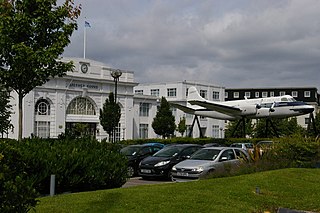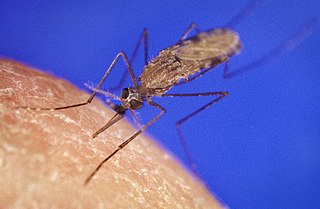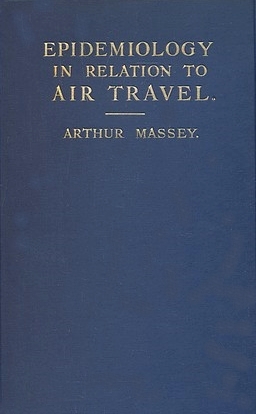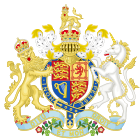
Croydon Airport was the UK's only international airport during the interwar period. It opened in 1920, located in Croydon, then part of Surrey. Built in a Neoclassical style, it was developed as Britain's main airport, handling more cargo, mail, and passengers than any other UK airport at the time. Innovations at the site included the world's first air traffic control and the first airport terminal. During World War II the airport was named RAF Croydon as its role changed to that of a fighter airfield during the Battle of Britain; and in 1943 RAF Transport Command was founded at the site, which used the airport to transport thousands of troops into and out of Europe.

British Airways Ltd was a British airline company operating in Europe in the period 1935–1939. It was formed in 1935 by the merger of Spartan Air Lines Ltd, United Airways Ltd, and Hillman's Airways. Its corporate emblem was a winged lion.

The regulation of therapeutic goods, defined as drugs and therapeutic devices, varies by jurisdiction. In some countries, such as the United States, they are regulated at the national level by a single agency. In other jurisdictions they are regulated at the state level, or at both state and national levels by various bodies, as in Australia.
The International Sanitary Conferences were a series of 14 international meetings held in response to growing concerns about human disease epidemics. The first of the Sanitary Conferences was organized by the French Government in 1851 to standardize international quarantine regulations against the spread of cholera, plague, and yellow fever. In total 14 conferences took place from 1851 to 1938; the conferences played a major role in the formation of the Office international d'hygiène publique before World War II, and the World Health Organization in 1948.

Heston Aerodrome was an airfield located to the west of London, England, operational between 1929 and 1947. It was situated on the border of the Heston and Cranford areas of Hounslow, Middlesex. In September 1938, the British Prime Minister, Neville Chamberlain, flew from Heston to Germany three times in two weeks for talks with Adolf Hitler, and returned to Heston from the Munich Conference with the paper referred to in his later "Peace for our time" speech from 10 Downing Street.

The International Certificate of Vaccination or Prophylaxis (ICVP), also known as the Carte Jaune or Yellow Card, is an official vaccination report created by the World Health Organization (WHO). As a travel document, it is a kind of medical passport that is recognised internationally and may be required for entry to certain countries where there are increased health risks for travellers.
Lympne Airport, was a military and later civil airfield, at Lympne, Kent, United Kingdom, which operated from 1916 to 1984. During the First World War RFC Lympne was originally an acceptance point for aircraft being delivered to, and returning from, France but was later designated as a First Class Landing Ground, RAF Lympne. It became a civil airfield in 1919 and saw the operation of early air mail services after the 1918 armistice. It was one of the first four airfields in the United Kingdom with customs facilities.

The Directorate General of Civil Aviation (DGCA) is a statutory body of the Government of India to regulate civil aviation in India. It became a statutory body under the Aircraft (Amendment) Act, 2020. The DGCA investigates aviation accidents and incidents, maintains all regulations related to aviation and is responsible for issuance of licenses pertaining to aviation like PPL's, SPL's and CPL's in India. It is headquartered along Sri Aurobindo Marg, opposite Safdarjung Airport, in New Delhi. The Government of India is planning to replace the organisation with a Civil Aviation Authority (CAA), modelled on the lines of the American Federal Aviation Administration (FAA).

Hounslow Heath Aerodrome was a grass airfield, operational 1914–1920. It was in the London borough of Hounslow, and hosted the British Empire's first scheduled daily international commercial flights, in 1919. The site today includes the main remaining part of Hounslow Heath.
National Air Communications was a British government organisation that directed civilian flying operations from the outbreak of World War II until April 1940.

Georgian Civil Aviation Administration is the Aviation Authority which controls all the aviation affairs on the territory of Georgia. GCCA HQ is at Tbilisi International Airport in the city of Tbilisi.

Airport malaria, sometimes known as baggage, luggage or suitcasemalaria, occurs when a malaria infected female Anopheles mosquito travels by aircraft from a country where malaria is common, arrives in a country where malaria is usually not found, and bites a person at or around the vicinity of the airport, or if the climate is suitable, travels in luggage and bites a person further away. The infected person usually presents with a fever in the absence of a recent travel history. There is often no suspicion of malaria, resulting in a delay in diagnosis. It is typically considered as a diagnosis after other explanations for symptoms have been ruled out.
The International Sanitary Convention for Aerial Navigation (1933) was an international sanitary convention, drawn up in 1932 and signed at The Hague on 12 April 1933 and came into force on 1 August 1935 to protect communities against diseases liable to be imported by aircraft and to protect air crew against diseases due to flying. It contained a number of regulations consisting of measures to prevent the spread of plague, cholera, yellow fever, typhus and smallpox. It was formally ratified by around ten countries. Service aircraft were included in March 1939. Intelligence on infectious disease at ports was provided to health authorities by the health organisation at the League of Nations. It was amended in Washington on 15 December 1944, to form the International Sanitary Convention for Aerial Navigation (1944), which came into force on 15 January 1945.

The Croydon typhoid outbreak of 1937, also known as the Croydon epidemic of typhoid fever, was an outbreak of typhoid fever in Croydon, Surrey, now part of London, in 1937. It resulted in 341 cases of typhoid, and it caused considerable local discontent leading to a media campaign and a public inquiry.

The Parrots Regulations, 1930 was created to prevent the importation of parrots into the UK following consideration by the permanent Committee of the Office international d'hygiène publique, after the appearance of psittacosis in the worldwide 1929–1930 psittacosis pandemic. It added further duties for port medical officers of health. Parrots for research were exempt, but not parrots brought home by serviceman.
Air Vice-Marshal Sir David Munro was a Scottish physician, senior Royal Air Force officer, and later Rector of the University of St Andrews.
Sir Arthur Massey was a British medical doctor and author. He was the medical officer of Coventry and author of Epidemiology in Relation to Air Travel (1933). In 1950, he became honorary physician to King George VI.
The International Sanitary Convention for Aerial Navigation (1944) was an international sanitary convention, one of the international co-operation land-marks in the history of public health, signed in Washington on 15 December 1944, and came into force on 15 January 1945.

Epidemiology in Relation to Air Travel is a book by Arthur Massey, the medical officer of health of Coventry, published by H. K. Lewis & Co. in 1933. By comparing the travel times of journeys by ship to those of travelling by air, he demonstrated how the quarantinable diseases plague, cholera, yellow fever and smallpox, could arrive in the UK in the early 1930s.
North Eastern Airways (NEA) was a British airline which operated from 1935 until the outbreak of World War II in 1939. Based initially in Newcastle upon Tyne, it operated routes from Scotland to London in competition with the railways, retaining its independence to the end.












